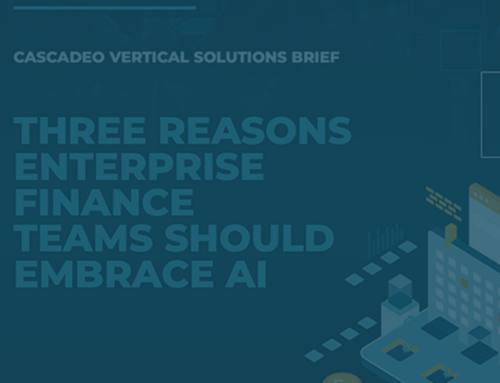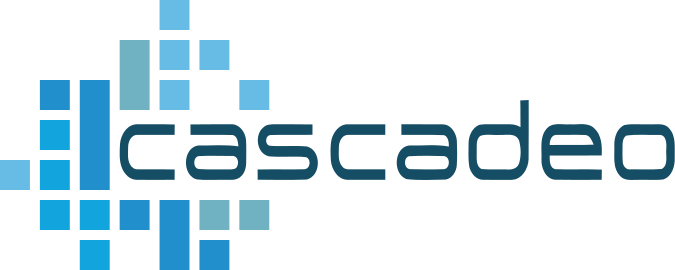
Catch up on Aprils’s and May’s blog posts, featuring barriers to cloud adoption, the 6 R’s of cloud migration, sustainable cloud, digital ethics, and cloud cost optimization.
Cloud Ideas and Advice from April and May 2023
We’re exploring emerging tech and big ideas on the Cascadeo blog. Read on for a roundup of topics you may have missed.
Cloud Cost Optimization: a Starting Point to Maximizing Cloud ROI
It’s on everybody’s mind, particularly as we embark another quarter of will-it-won’t-it recession predictions: cost management. IT budgets are especially complicated in such discussions, as exploding technological advances offer new opportunities to serve your customers, and in turn, create new customer expectations. Taking full advantage of those opportunities, for most enterprises, will eventually require some level of cloud adoption, which can impact your IT budget in a wide variety of ways, depending on your strategy and your service provider’s approach.
Cost optimization is a much bigger topic than we can cover in a single blog post, but considering some of the basics can help you balance budget anxieties with the drive to grow your business at scale and provide your stakeholders with the highest level of product, service, and experience across your business. Let’s start with that basic principle: cost optimization isn’t focused on cutting budgets; it’s about making sure your cloud spend ROI is maximized. That means your deployment is designed for efficiency, none of your resources are wasted, and your costs are reviewed periodically to assure that everything stays that way…
The Great Power of Emerging Tech Demands Responsible Attention to Digital Ethics
We have rapidly entered an age of tech-induced anxiety. While ChatGPT and other generative AI tools have the capacity to make work and life easier, the tools themselves and the way they’ve been covered in a wave of thinkpieces across a variety of media have done little to calm the general public’s fear of the unknown. Companies that utilize data collection and automated processes—which is to say, everyone—need to create, implement, and communicate digital ethics standards to maintain stakeholder confidence and trust, even as those tools differ substantially from generative AI. The machines aren’t coming to replace us (yet), but without transparency about how they’re actually being used, saying so doesn’t do anyone much good.
AI is an almost inconceivably nebulous term to ordinary people. Though most of us use it every day in forms like autocorrect, predictive text, and algorithmic suggestions on Amazon or YouTube, users find it difficult to define and contextualize, thinking more of Robocop than of their Twitter feeds. And despite the fact that AI, in any form, only makes up a portion of a company’s digital landscape, the impression it leaves on customers, via the messages in the culture around us, is outsized, leading to a strong focus on AI in digital ethics fears and discussions…
Is the Cloud Truly Environmentally Sustainable?
Earth Day is this week, so let’s dive right in and talk about sustainability. In 2022, AWS added sustainability as a sixth pillar in its Well-Architected Framework, which defines the AWS best principles for cloud deployment and management. AWS and Microsoft Azure have both committed to sourcing their electricity from 100% renewable energy by 2025. Terms like green cloud and sustainable cloud litter the cloud computing landscape. At the same time, the data centers where hyperscalers operate servers are massive consumers of electricity, and that consumption is only growing. Migrating to the cloud can feel sustainable because the electricity usage is shifted to another entity, out of sight. But for sustainability to be meaningful to your customers, it has to be real, not simply a diversion.
So. Is the cloud sustainable?
As with so many other aspects of cloud, the answer is: it depends... Click here to read more.
Moving on Up with the 6 Rs of Cloud Migration
Migrating to the cloud is a little like moving to the hottest neighborhood in town—everyone is doing it, and the benefits will continue to accrue over time. Fortunately, unlike the hot neighborhood, the cloud has no shortage of capacity, and more residents won’t automatically drive up prices due to scarcity. (In theory, in fact, a higher cloud population should drive prices down, though of course the cloud providers determine pricing via their own methods.) To manage the big move, it helps to start by understanding the six strategies for migration: rehosting, replatforming, repurchasing, refactoring / re-architecting, retiring, and retaining...
What’s in Your Way? Removing Barriers to Public Cloud Adoption
The cloud is the future of computing, offering unprecedented business agility and data analytics capacity. But getting there can be challenging. For every industry, enterprise, and department, any number of obstacles might stand in the way of a successful cloud migration. In most cases, careful planning and a great service provider can eliminate barriers to cloud adoption, but only if leaders are willing to recognize and contextualize those barriers, so that their solutions can be built with an informed approach.
In upcoming weeks, we’ll be breaking down those obstacles in detail on the Cascadeo blog so that you can overcome them and move your business forward. This week, we begin with an overview and discussion of the most common points of resistance to cloud migration and transformation…
Safe and Sound: Building Confidence in Cloud Security
Security concerns are the most common barrier to cloud adoption. We told you in our post about breaking down barriers to cloud adoption that a well-made cloud transformation can actually provide more security for your operations than an on-premises system. How can that be, when you’ve heard of multiple cloud security breaches? It has to do with how cloud responsibility is structured, and how your cloud architecture is configured, deployed, and managed.
A good place to start is understanding how cloud vendors designate responsibility for computing environments, which AWS, Microsoft Azure, and Google Cloud Platform define via a “shared responsibility model.” In this model, cloud providers are accountable for the hardware and physical environment where the hardware is located…
The Right People: How to Overcome the Cloud Skills Gap
Despite continuing tech layoffs throughout 2023 so far, one area of staffing need persists: Cloud talent. With recruiting costs soaring for in-demand tech positions to approximately $4,700 per hire, securing and retaining the right talent is an expensive, time-consuming endeavor. Because cloud is both highly specialized and growing, and because legacy-style development doesn’t necessarily translate smoothly into cloud prowess, the gap in cloud skills is significant and presents a serious challenge to enterprises attempting to transition into cloud-native operations. Security concerns may be the first barrier to cloud adoption in terms of planning, but lacking the staff to modernize represents a practical impediment: even when the you know you belong in the cloud, without the right people to do the job, how do you get there? And once you’ve migrated, how do you keep your cloud optimized and running smoothly? …











